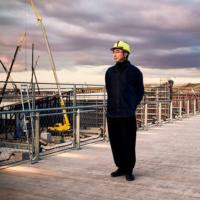On opposite sides of the world, two trials have been winding their way to justice along very different paths. In each case, the guilt or innocence of the defendants is not seriously at issue. These trials are hardly "whodunits." In a sense, each has been a ritual rather than a substantive procedure, in which the main question for the defendants will be not whether they are convicted, but whether they receive the death penalty. But the disparity in how the two legal rituals are being carried out, one in Japan, the other in the United States, sheds light on the different roles such trials seem to play in the two societies.
Here in Tokyo, the sluggish, stop-and-go trial of Aum Shinrikyo founder Shoko Asahara, focusing on a crime committed in 1995, finally ended Oct. 31, seven and a half years after it began. To be accurate, the period of deliberations ended; the trial will not really be over until the Tokyo District Court hands down its ruling in late February.
Throughout those years, the media's attention was understandably intermittent, and public interest waned, although it flared again as the lawyers made their closing arguments. Despite the sensational nature of the main charge against Asahara -- the sarin gas attack on the Tokyo subway system that killed 12 people -- media coverage was mostly businesslike, non-speculative, low-key. For long stretches, there was nothing to cover at all. The trial was not being held behind closed doors, but it was so protracted that the public's desire to watch simply dried up. Following it closely would have been rather like watching a government bureaucracy at work for seven and a half years.


















With your current subscription plan you can comment on stories. However, before writing your first comment, please create a display name in the Profile section of your subscriber account page.